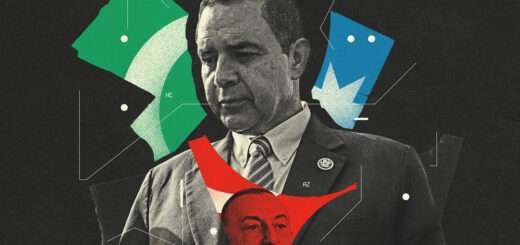Amid pressure from Baku, U.S. Diplomat ToursNagorno-Karabagh

“If the U.S. diplomats are against visiting Susa, then [to] hell with them,” announcedCaliber.az on May 5. The media outlet is widely seen as a mouthpiece for Azerbaijan’s authoritarian government.
One day later, Mark Libby, the U.S. ambassador to Azerbaijan, was on his way to Susa, a major city of the Nagorno-Karabakh region, which is known as Shushi in Armenian.
An embassy spokesperson told RFE/RL that Libby’s trip was made as “part of his regular travel throughout Azerbaijan.” But many have questioned the timing of the visit.
On May 3, during a roundtable meeting with Azerbaijani journalists, Libby was asked whether he would visit territory that Baku recently recaptured from ethnic Armenian forces. The ambassador replied that Nagorno-Karabakh and surrounding regions were “a little different” from the rest of Azerbaijan and asserted he did not want to “play a part in a propaganda show.” The ambassador added that, “when the time comes to [visit the retaken territories], that’s what I’ll do.”
But Libby’s apparent hesitancy to enter Nagorno-Karabakh, which was populated by ethnic Armenians for centuries but is internationally recognized as Azerbaijani land, appeared to enrage Baku. A series of articles, including the Caliber article mentioned above — “High Time To Declare U.S. Ambassador Persona Non Grata” — hinted that Azerbaijan may expel the diplomat, who took his post in January this year.
At the time of Libby’s controversial May 6 visit, news was circulating that a historic church in Susa had been erased and an entire village previously populated by Christian Armenians had been wiped out, with a mosque being built on the site.
In e-mailed responses to RFE/RL, Vanessa Schulz Zenji, a spokeswoman for the U.S. Embassy in Baku, did not answer questions on whether the ambassador had asked local officials about the apparent cultural destruction taking place in Susa or whether Libby’s trip was approved in Washington. A U.S. state department spokesman refused to comment on the trip when asked by reporters on May 7.
Libby’s visit ignited a storm on social media, with many alleging the visit could be seen as a green light from Washington for Baku to continue erasing Armenian heritage in the region.
David Sarkisian, a 26-year-old native of Susa who lived in an apartment just a short walk from where Libby posed for photos on May 6, told RFE/RL, “I don’t think any country’s ambassador should visit [Nagorno-Karabakh] as long as the issue remains unsolved. The fact it was the U.S. ambassador who went there is especially unpleasant for me.”
Shulz Zenji, the U.S. Embassy spokeswoman, suggested the visit may be linked to efforts at a peace deal between Baku and Yerevan. “We have been encouraged by recent steps toward concluding an agreement and are committed to supporting a durable and dignified peace in the region,” she said.
When RFE/RL reported last month on alleged cultural destruction in Susa, it requested comment from Azerbaijan’s presidential administration but received no response.











